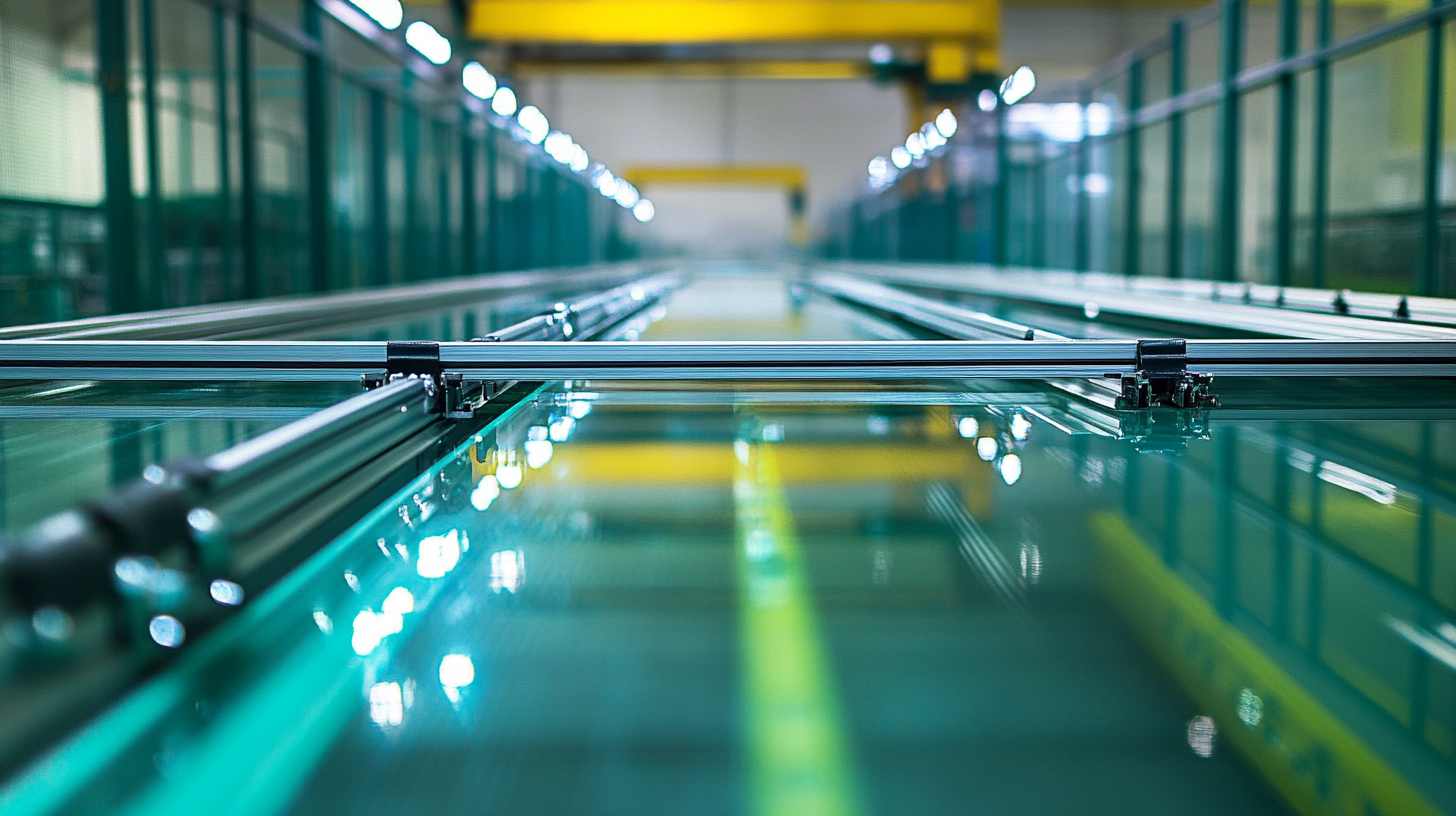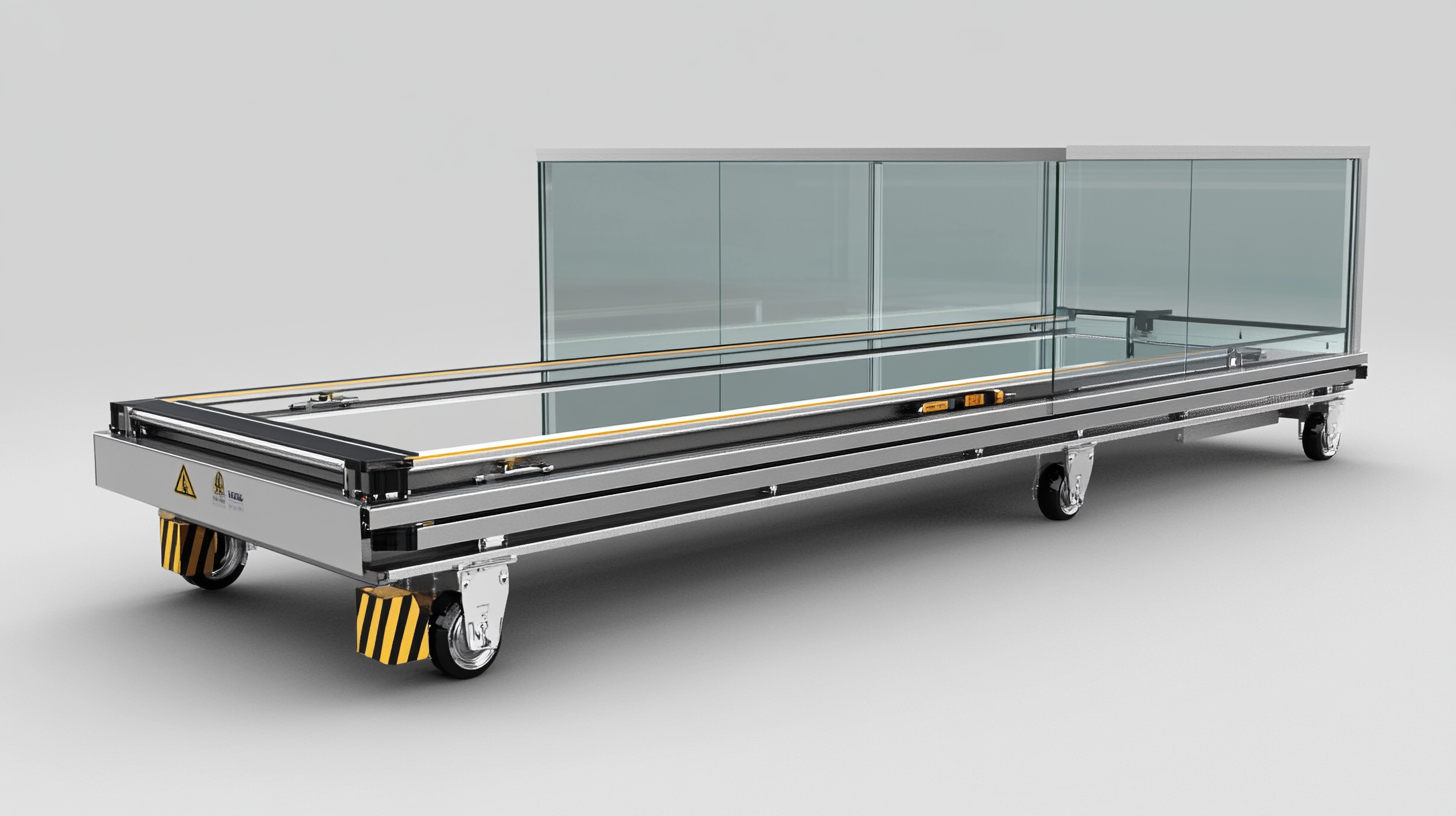Ultimate Guide to Choosing the Best Glass Loading Table for Your Manufacturing Needs
In the fast-paced manufacturing industry, the efficiency of operations plays a pivotal role in overall productivity, particularly in glass production. One of the key components that can significantly enhance workflow is the Glass Loading Table, which streamlines the handling and movement of glass sheets. According to a recent report by Smithers Pira, the global glass processing equipment market is projected to grow at a CAGR of 5.3% from 2021 to 2026, indicating that manufacturers increasingly recognize the importance of investing in specialized tools like glass loading tables. These tables not only improve productivity but also reduce the risk of damage to glass products, making them an indispensable asset in modern facilities. This guide aims to navigate through the essential factors to consider when selecting the best Glass Loading Table tailored to your manufacturing needs, ensuring you optimize both performance and safety in your production line.

Key Considerations for Selecting the Right Glass Loading Table for Your Business
When selecting the right glass loading table for your manufacturing needs, it's essential to consider several key factors that can significantly impact your workflow and efficiency. One of the first aspects to evaluate is the table's size and weight capacity. Ensure that the dimensions can accommodate the glass sheets you typically handle, and that the weight limit exceeds your heaviest loads. This will prevent potential damage and ensure safety during operations.
Another critical consideration is the table's construction material. Opt for tables made from durable materials such as stainless steel or heavy-duty aluminum, as they can withstand the rigors of a busy manufacturing environment. Additionally, check for features like adjustable height and surface texture, which can enhance usability and reduce the risk of glass slippage.
**Tips:** Always assess the ergonomic features of the loading table. A design that minimizes strain can greatly enhance worker comfort and productivity. Furthermore, look for options that offer easy integration with your existing systems or machinery, allowing for a seamless workflow. Prioritize a supplier that provides robust customer support, as this will be invaluable for troubleshooting and maintenance down the line.

Essential Features to Look for in a High-Quality Glass Loading Table
When selecting a glass loading table for your manufacturing needs, certain essential features can significantly enhance productivity and efficiency. One of the most crucial attributes to look for is the table's weight capacity. A high-quality glass loading table should easily accommodate the size and weight of the glass sheets you handle, ensuring safety and reducing the risk of damage during transfer. Additionally, stability is paramount; choose a table with a sturdy frame and supportive structures to withstand repetitive loading and unloading operations.
Another important feature is the adjustability of the table height. An adjustable structure allows operators to customize the table for optimal ergonomics, reducing strain and enhancing comfort during use. Furthermore, look for tables equipped with safety features such as rubberized edges or anti-slip surfaces to prevent accidents. Integration of advanced technology, like pneumatic or electric lifts, can also streamline the loading process, making it quicker and more efficient. Investing in a glass loading table with these essential features will ensure you meet your manufacturing needs effectively while maintaining a safe work environment.
How to Evaluate the Size and Capacity of Glass Loading Tables
When evaluating the size and capacity of glass loading tables, it's essential to consider the dimensions of the glass sheets you will be handling. Measuring the largest glass size you frequently work with allows you to find a table that can accommodate that specific dimension without risking overlapping or instability. Additionally, think about the thickness and weight of the glass. A suitable table should have sufficient capacity to support heavy glass without bending or warping, ensuring safety and efficiency in your manufacturing process.
Another critical factor is the operational layout of your workspace. A glass loading table should fit seamlessly into your existing workflow, meaning you need to account for movement and access points around the table. Take into consideration not just the size of the table itself but also how easy it is to load and unload glass panels. This requires a balance between table dimensions and the necessary space around it for personnel and machinery to operate effectively. By carefully assessing these factors, you can select a glass loading table that optimizes productivity while enhancing safety in your manufacturing environment.
Glass Loading Tables Size and Capacity Evaluation
Tips for Maintenance and Care of Your Glass Loading Table
 Maintaining your glass loading table is crucial to ensure optimal performance and longevity in manufacturing processes. Regular inspection is key; check for any signs of wear and tear, such as scratches on the surface or misalignment in the loading mechanism. Clean the table frequently using a soft, non-abrasive cloth to remove dust and debris that can lead to damage over time. Pay particular attention to the edges and corners, as these areas are prone to accumulate particles that might affect the quality of glass handling.
Maintaining your glass loading table is crucial to ensure optimal performance and longevity in manufacturing processes. Regular inspection is key; check for any signs of wear and tear, such as scratches on the surface or misalignment in the loading mechanism. Clean the table frequently using a soft, non-abrasive cloth to remove dust and debris that can lead to damage over time. Pay particular attention to the edges and corners, as these areas are prone to accumulate particles that might affect the quality of glass handling.
In addition to routine cleaning, proper lubrication is essential for moving parts. Use manufacturer-recommended lubricants to ensure smooth operation and prevent corrosion or rust. It is also beneficial to keep an eye on the environmental conditions surrounding the loading table; maintaining a stable temperature and humidity level can further protect the integrity of both the table and the glass products being processed. By following these maintenance tips, you can significantly enhance the efficiency and functionality of your glass loading table, ultimately leading to better productivity in your manufacturing setup.
Cost vs. Value: Making an Informed Investment in Glass Loading Equipment
When investing in glass loading equipment, understanding the balance between cost and value is crucial for any manufacturer. A recent industry report from Smithers shows that automation in the glass manufacturing sector can improve efficiency by up to 30%, significantly impacting bottom-line performance. However, the initial investment in high-quality glass loading tables can be substantial. For instance, while lower-end models may start around $10,000, premium options can go upwards of $50,000. The key is to evaluate long-term benefits rather than just the price tag.
A study by IBISWorld indicates that businesses that prioritize value-oriented investments often see a return on investment (ROI) exceeding 200% within three years. Features that contribute to this value include enhanced durability, lower maintenance costs, and better operational speed—all of which translate into increased productivity and reduced downtime. By carefully analyzing their unique manufacturing needs and aligning those with the best glass loading solutions available, manufacturers can make informed decisions that support sustainable growth and efficiency in their operations.
Ultimate Guide to Choosing the Best Glass Loading Table for Your Manufacturing Needs
| Loading Table Model |
Load Capacity (lbs) |
Material Used |
Dimensions (L x W x H) |
Price ($) |
Warranty (Years) |
| Model A |
500 |
Steel |
60 x 40 x 30 in |
1,200 |
3 |
| Model B |
800 |
Aluminum |
72 x 48 x 36 in |
1,500 |
5 |
| Model C |
700 |
Composite |
65 x 45 x 33 in |
1,800 |
4 |
| Model D |
900 |
Steel |
75 x 50 x 34 in |
2,200 |
6 |
| Model E |
600 |
Aluminum |
70 x 44 x 32 in |
1,600 |
3 |

Home
About Us
Products
UPVC PVC Window Machine
Aluminum Window Machine
Glass Cutting Machine
Glass Edging Machine
Insulating Glass Machine
Glass lifting machine
Glass Washing Machine
Glass Laminating Machine
Glass Sandblasting Machine
Glass Drilling Machine
CNC Glass Working Center
CNC Non-Metal Cutting Machine
The Other Glass Machinery
Application
Download
News
Contact Us


 Maintaining your
Maintaining your